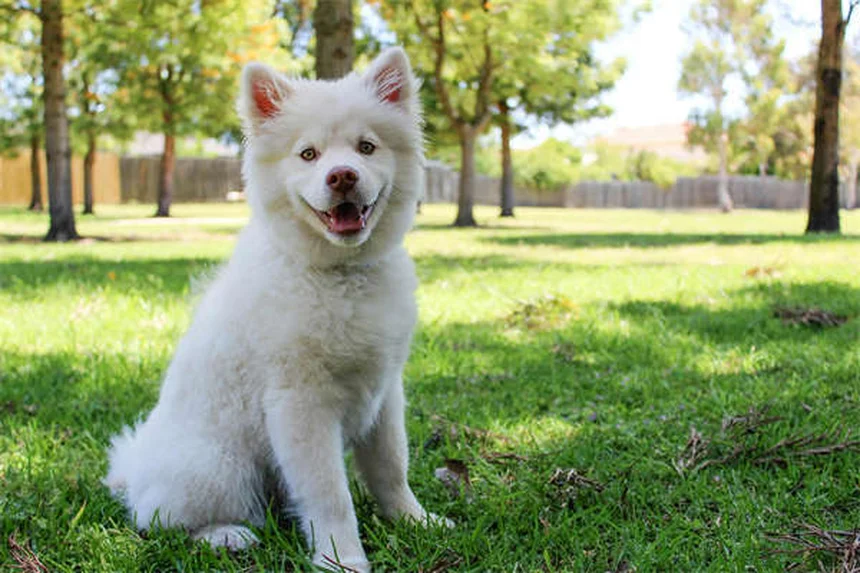How cold is too cold for dogs? The answer: It depends on your dog's breed, size, and health - but generally, temperatures below 20°F become dangerous for most pups. I've learned through years of dog ownership that while my Husky could sleep in a snowbank happily, my neighbor's Chihuahua starts shivering at 40°F. The key is understanding your individual dog's cold tolerance and watching for warning signs like lifting paws or anxious behavior.We'll break down exactly what makes some dogs handle cold better than others, when you should consider dog coats or booties, and how to spot early signs of hypothermia. You'll also learn my pro tips for keeping winter walks safe and fun, no matter what Mother Nature throws your way. After all, with the right preparation, you and your dog can enjoy the winter wonderland together - without risking your furry friend's health.
E.g. :Can You Give Benadryl to Cats? Vet-Approved Safety Guide
- 1、Understanding Your Dog's Cold Tolerance
- 2、Key Factors That Affect Cold Sensitivity
- 3、Environmental Factors You Can't Ignore
- 4、Practical Winter Protection Solutions
- 5、Recognizing When It's Too Cold
- 6、Making Winter Fun and Safe
- 7、Beyond the Basics: Additional Cold Weather Considerations
- 8、Seasonal Safety Hazards Most Owners Miss
- 9、Cold Weather Myths Debunked
- 10、Special Considerations for Different Living Situations
- 11、Winter Bonding Opportunities
- 12、FAQs
Understanding Your Dog's Cold Tolerance
Why Some Dogs Handle Cold Better Than Others
Ever wonder why your neighbor's Husky plays happily in the snow while your Chihuahua shivers at the door? It's all about biology and breed characteristics. Dogs with thick double coats - like Siberian Huskies or Newfoundlands - were literally born for this weather. Their ancestors thrived in Arctic conditions, and those fluffy genes got passed down.
On the flip side, my friend's skinny Xoloitzcuintli needs three sweaters just to check the mail in December. Thin-coated breeds lose body heat fast, especially when you combine their lack of insulation with small body size. Here's a quick comparison of how different dogs handle cold:
| Breed Type | Comfortable Temperature Range | Winter Gear Needed |
|---|---|---|
| Northern breeds (Huskies, Malamutes) | Below 0°F | Usually none |
| Average medium/large dogs | 20-45°F | Maybe a sweater |
| Small or thin-coated breeds | Above 32°F | Jacket + booties |
The Surprising Factor: Coat Color Matters
Here's something most owners don't realize - your dog's fur color affects their warmth. On sunny winter days, my black Lab soaks up heat like a solar panel, while his white-coated sister stays noticeably cooler. Dark colors absorb more sunlight, giving those dogs a natural heating advantage.
Key Factors That Affect Cold Sensitivity
 Photos provided by pixabay
Photos provided by pixabay
Size Really Does Matter
Remember science class talking about surface area? Small dogs have more skin relative to their body mass, meaning they lose heat faster than big dogs. That's why your 5-pound Yorkie gets cold while the Great Dane next door barely notices the chill.
But wait - isn't body fat supposed to help? Sure, some extra padding provides insulation, but we're not recommending winter weight gain. The health risks of obesity far outweigh any cold protection benefits. Instead, invest in a good quality dog jacket like the Hurtta® Extreme Warmer III for serious winter protection.
Age and Health Play Big Roles
Have you noticed your senior dog struggles more with temperature changes? That's because aging bodies (human and canine) lose some ability to regulate temperature. Puppies haven't fully developed this ability either, while sick dogs may lack energy to generate body heat.
For these vulnerable pups, I recommend:
- Shorter outdoor time in cold weather
- Cozy sweaters even indoors
- Heated pet beds (set on low)
Environmental Factors You Can't Ignore
Wind Chill - The Silent Cold Maker
That 35°F day might not seem bad until the wind kicks up. Wind cuts right through a dog's coat, stealing warmth faster than you'd expect. I learned this the hard way when my normally cold-tolerant Golden started shivering during a windy walk.
 Photos provided by pixabay
Photos provided by pixabay
Size Really Does Matter
Ever gotten chilled after rain soaked your jacket? Dogs experience this tenfold. Damp fur provides zero insulation, whether from snow, rain, or even heavy fog. That's why I always carry a towel to dry my dog after winter walks.
Practical Winter Protection Solutions
Dressing Your Dog for Success
Not all dog clothes are created equal. For chilly fall days, the Frisco Plaid Cable Knit Sweater works great. But when winter really hits, you'll want something like the Canada Pooch Waterproof Parka that actually blocks wind and moisture.
Here's my pro tip: Measure your dog carefully before buying clothes. A poorly fitting coat can restrict movement or leave cold spots. Look for adjustable straps and full belly coverage for best protection.
Don't Forget Those Paws!
Would you walk barefoot on ice? Neither should your dog. Between salt chemicals and freezing surfaces, winter is tough on paws. The Muttluks Fleece-Lined Boots provide real protection, though it might take a few tries for your dog to accept wearing them.
If boots aren't an option, at least use paw wax before walks and wipe paws after to remove salt. I keep pet-safe ice melt around my house too - regular salt can burn paw pads.
Recognizing When It's Too Cold
 Photos provided by pixabay
Photos provided by pixabay
Size Really Does Matter
So when should you actually worry? While every dog differs, here's my rule of thumb:
- Above 45°F: Most dogs comfortable
- 32-45°F: Watch small/thin-coated dogs
- Below 20°F: Potentially dangerous for all
But here's the thing - these numbers don't account for wind or wetness. A damp 40°F day with wind can feel worse than a dry 25°F day. Always consider the "feels like" temperature, not just the thermometer reading.
Reading Your Dog's Signals
Dogs can't say "I'm freezing," but they show it clearly if you know the signs. Watch for shivering, lifting paws, or trying to turn back home. My dog once sat down mid-walk and refused to move - his way of saying "enough!"
More serious signs like confusion or pale skin mean possible hypothermia. If you see these, get inside immediately and call your vet. Better safe than sorry when it comes to cold weather risks.
Making Winter Fun and Safe
Adjusting Activities for the Season
Winter doesn't mean staying cooped up! We just modify our routine:
- Shorter but more frequent walks
- Indoor play sessions
- Doggy playdates at indoor facilities
For snow lovers, I clear a play area in the yard and supervise closely. Always check for snowballs between toes after playtime - these can cause real discomfort.
Creating Cozy Indoor Spaces
After outdoor adventures, my dogs love curling up on their heated pet bed (set to low) with a blanket. Older dogs especially appreciate these comforts. Just be sure to use pet-safe heating products and supervise their use.
Remember, winter with dogs can be wonderful with proper preparation. Pay attention to your individual dog's needs, invest in quality gear, and don't hesitate to cut outdoor time short when needed. Your furry friend will thank you with warm cuddles all season long!
Beyond the Basics: Additional Cold Weather Considerations
Nutritional Needs in Cold Weather
Did you know your dog's diet might need tweaking when temperatures drop? Outdoor working dogs and extremely active breeds actually burn more calories trying to stay warm. My neighbor's sled dogs get extra portions during winter months, while my couch-potato Bulldog keeps his regular diet.
But here's an important distinction - most household pets don't need extra food unless they're spending hours outside daily. In fact, winter weight gain can be problematic when activity levels decrease. Consult your vet before making any dietary changes, especially for senior dogs or those with health conditions.
The Indoor Heating Paradox
Isn't it ironic that while we worry about outdoor cold, indoor heating can cause issues too? Forced-air heating dries out your dog's skin and coat, leading to winter itchiness. I combat this by:
- Using a humidifier in our main living area
- Adding fish oil supplements to my dog's meals
- Brushing more frequently to distribute natural oils
Seasonal Safety Hazards Most Owners Miss
Antifreeze: A Deadly Attraction
Here's a chilling fact - ethylene glycol antifreeze smells sweet to dogs but is extremely toxic. Just a teaspoon can be fatal. I always check my driveway for leaks and use pet-safe antifreeze alternatives. Store all automotive fluids securely - curious noses get into trouble fast.
Watch for these symptoms if you suspect antifreeze ingestion:
- Drunken behavior or wobbliness
- Excessive thirst
- Vomiting
Time is critical - get to the vet immediately if exposure occurs.
Hidden Ice Dangers
That smooth icy surface isn't just slippery - it's a potential injury waiting to happen. Dogs can tear ligaments just like human athletes when they slip on ice. I keep pathways clear and use pet-safe ice melt religiously. For older dogs, consider non-slip booties or paw grips for added traction.
Here's a helpful comparison of winter traction aids:
| Product Type | Best For | Limitations |
|---|---|---|
| Rubber-soled booties | All-day protection | Some dogs resist wearing |
| Paw wax | Short walks | Needs frequent reapplication |
| Grip stickers | Temporary solution | May not stay on active dogs |
Cold Weather Myths Debunked
"My Dog's Coat is Enough Protection"
How many times have you heard this at the dog park? While fur does provide insulation, no coat can protect against extreme cold indefinitely. Even northern breeds have limits - I've seen Huskies get frostbite during prolonged exposure to subzero temperatures with wind chill.
The truth is, all dogs need monitoring in cold weather. Watch for:
- Discoloration of ears or tail (frostbite signs)
- Unusual lethargy after being outside
- Persistent shivering that doesn't stop when indoors
"Dogs Don't Get Cold Because They're Animals"
This old-school thinking drives me crazy! Domestic dogs have adapted to live with humans, losing some of their wild ancestors' hardiness. My cousin's Italian Greyhound would last about five minutes in the wild during winter - and your pampered pup probably wouldn't fare much better.
Special Considerations for Different Living Situations
Apartment Dogs vs. House Dogs
Living in a high-rise presents unique winter challenges. Those quick potty breaks become arctic expeditions when you're 20 floors up! I recommend:
- Keeping a coat and booties by the door
- Using indoor potty options for extreme weather
- Scheduling walks during warmest daylight hours
House dogs have different issues - like remembering to wipe snowy paws before they track through your kitchen. A simple towel by each entrance solves this nicely.
Country Living Winter Realities
Rural dog owners face special winter challenges. My friend in Minnesota deals with:
- Frozen water bowls (heated bowls solve this)
- Deep snow limiting exercise areas
- Wildlife hazards when dogs roam
For farm dogs, proper shelter is crucial - insulated dog houses with wind blocks and raised floors make a huge difference. And always check paws for ice buildup between toes after outdoor time.
Winter Bonding Opportunities
Training Season Advantages
Cold months offer perfect opportunities to strengthen your bond through indoor training. Teaching new tricks or polishing obedience skills keeps your dog mentally stimulated when outdoor exercise is limited. My dogs actually look forward to our winter training sessions - especially when chicken treats are involved!
Try these engaging indoor activities:
- Nose work games (hiding treats around the house)
- Puzzle toys that dispense food
- Basic agility using household items
Cozy Cuddle Time Benefits
Let's be honest - winter was made for snuggling. Shared warmth benefits both you and your dog physically and emotionally. My dogs seem to know when I need extra comfort during those long, dark January nights. Just be cautious about overheating - dogs can't regulate temperature as well under heavy blankets.
Remember, winter doesn't have to mean less quality time with your dog - it just means getting creative about how you spend that time together. With proper preparation and awareness, you and your furry friend can enjoy all the season has to offer while staying safe and comfortable.
E.g. :Animal Care Tech Note: Temperature Requirements for Dogs
FAQs
Q: What temperature is too cold for small dogs?
A: Small dogs generally start feeling uncomfortable below 45°F and can be at risk below 32°F. Here's why: their higher surface area to body mass ratio means they lose heat faster than big dogs. I've seen this firsthand with my friend's 8-pound Yorkie who needs booties when my 70-pound Lab is fine. For small breeds, consider using sweaters around 40°F and full winter coats below freezing. Always watch for shivering or reluctance to walk - these are clear signs it's too cold for your petite pup. Remember, wind chill makes it feel even colder, so check the "feels like" temperature before heading out.
Q: Do dogs need winter coats?
A: Some dogs absolutely need winter coats, while others are naturally equipped for cold weather. Thin-coated breeds like Greyhounds or senior dogs benefit greatly from coats, while double-coated breeds like Huskies usually don't need them. I recommend the Hurtta® Extreme Warmer for serious winter protection - it's what I use for my arthritic Golden when temperatures drop. The key is proper fit: measure your dog's length from neck to tail base and chest circumference. A good coat should cover the belly without restricting movement. For fall weather, the Frisco Plaid Cable Knit Sweater works great, but when winter hits, you'll want something waterproof and windproof.
Q: How can I protect my dog's paws in winter?
A: Paw protection is crucial in winter! Between salt chemicals and ice, those sensitive pads need help. I swear by Muttluks Fleece-Lined Boots for my dogs - they provide real insulation and prevent painful ice buildup between toes. If your dog won't tolerate boots (it takes patience!), try paw wax before walks and always wipe paws after to remove salt. I also use pet-safe ice melt around my house instead of regular salt, which can burn paws. For dogs who walk on snowy surfaces, check regularly for snowballs forming between their toes - these can cause discomfort and even frostbite if left untreated.
Q: What are signs my dog is too cold?
A: Dogs show clear signs when they're uncomfortably cold - you just need to know what to look for. The most obvious signals are shivering, lifting paws, or trying to turn back toward home. My dog once sat down mid-walk and refused to move - his way of saying "enough!" More serious signs include pale skin (especially on ears or tail), sluggishness, or confusion, which could indicate hypothermia. Puppies and seniors are especially vulnerable, so keep their outdoor time shorter in cold weather. A good rule: if you're cold, your dog probably is too - especially if they're small, thin-coated, or not used to winter weather.
Q: Can dogs get frostbite?
A: Yes, dogs can absolutely get frostbite, especially on their ears, tails, and paws. Frostbite risk increases below 20°F, particularly in windy or wet conditions. I learned this the hard way when my adventurous Lab got frostnip on his ear tips after playing too long in subzero weather. Signs include pale or gray skin that feels cold and hard to the touch, followed by redness and peeling as it warms. If you suspect frostbite, gently warm the area with lukewarm (not hot!) water and contact your vet immediately. Prevention is key - limit time outside in extreme cold and use protective gear like coats and booties for vulnerable dogs.











